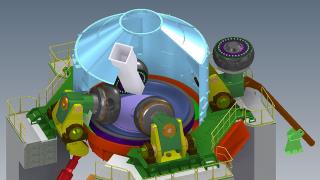Recent years have seen HeidelbergCement’s Slite cement works in Sweden steadily increase its use of alternative fuels to the 40-45 per cent mark. However, HeidelbergCement’s global substitution target of 30 per cent by 2020 has provided Slite with the impetus to raise fuel substitution to an ambitious 75 per cent. By Jan Theulen, HeidelbergCement, Belgium and Per Ole Morken, Slite cement plant, Sweden.
With a capacity of 6500tpd the Slite plant is the biggest cement works of Cementa and HeidelbergCement’s northern European network. One of the early movers in burning alternative fuels, it began using chipped tyres as a substitute for coal in the mid-1990s. Its location on Gotland, a relatively small Swedish island in the Baltic Sea, has helped to create an overseas supply chain of alternative fuels. Substitute fuels do not only come from local sources but also from mainland Sweden and nearby European countries. In 2012, the cement works received a solid replacement rate of 40 per cent, equivalent to 120,000tpa of alternative fuels.
